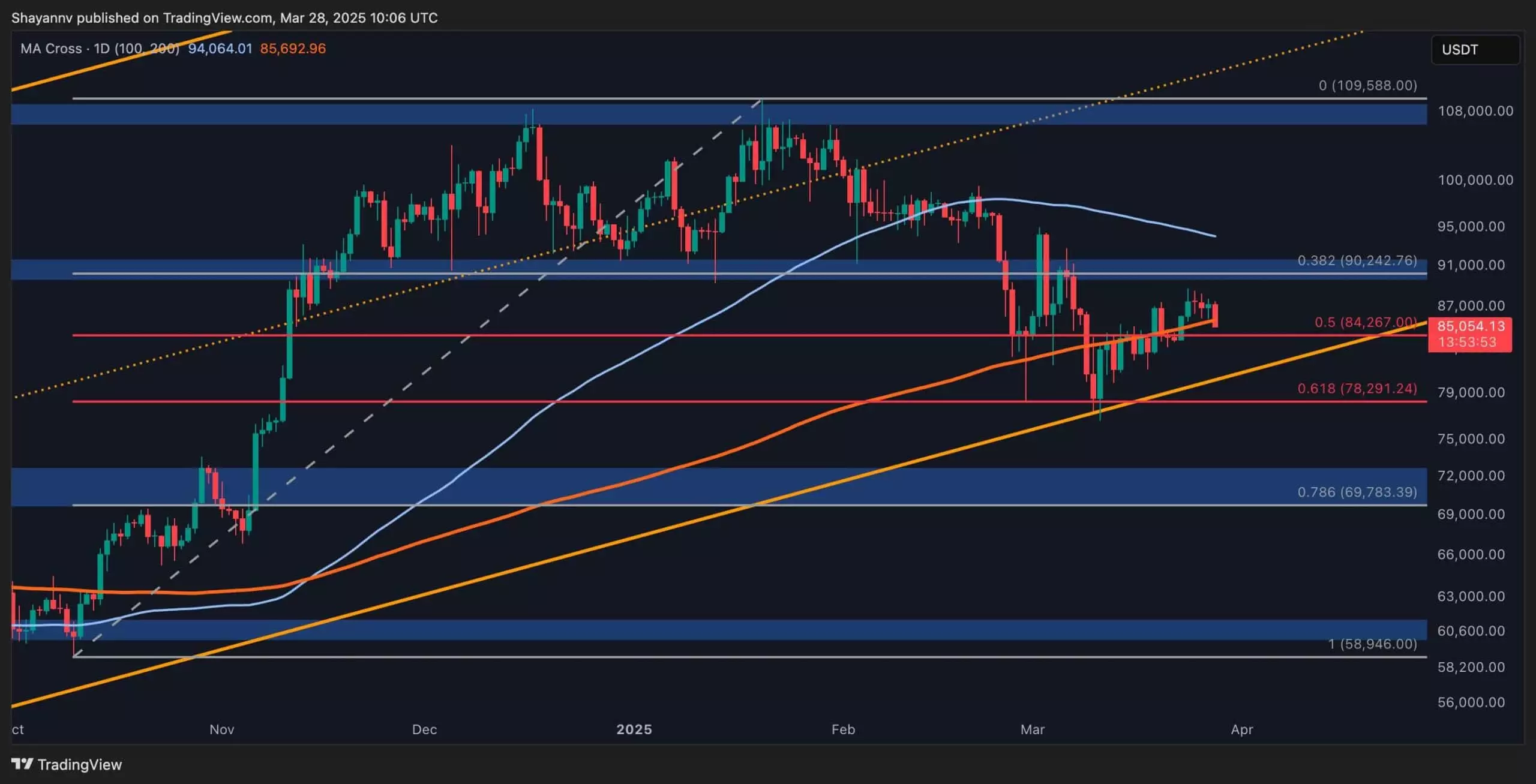Bitcoin enthusiasts have been anxiously watching the cryptocurrency’s recent price fluctuations, particularly its inability to maintain bullish momentum after a brief surge above the 100-day moving average. This momentary spike tantalized hopeful investors but ultimately succumbed to the harsh reality of market sentiment. The fleeting rise only showcased a significant flaw in the current trading environment: the absence of genuine buying pressure. As I observe the actions in this volatile market, it becomes evident that superficial gains might mask deeper vulnerabilities within Bitcoin’s structure.
Psychological Barriers and Fibonacci Retracement Levels
The psychological threshold of $80K marks yet another interesting facet in Bitcoin’s current struggle for stability. While some analysts herald this level as a solid support zone, particularly as it coincides with critical Fibonacci retracement levels, I can’t help but be skeptical. The common belief that this level will hold waters reeks of wishful thinking rather than grounded analysis. Traders often cling to arbitrary markers for perceived safety, yet history has shown that psychological levels can be breached without warning, often leading to cascading sell-offs. As Bitcoin nears this pivotal region, it feels more like a ticking time bomb than a steadfast anchor.
Short-Term Pressure Points
Currently, Bitcoin is contending with intense selling pressure at the upper boundary of its descending channel. The recent rejection at these peaks reflects a broader bearish trend, with the path of least resistance skewed downward. Bitcoin’s testing of the $83K support, a previous swing low, adds to this narrative of increasing bearish sentiment. While short-term buyers may attempt to intervene at this level, the dominance of sellers cannot be understated. This overwhelming pressure may indeed push Bitcoin below the $83K mark, setting the stage for a polarizing descent toward the formidable $80K inflection point.
The Realized Price: A Double-Edged Sword
Bitcoin’s interaction with the Realized Price of long-term holders presents us with yet another lens through which to scrutinize the situation. Historically, trading below the realized price of key cohorts serves as a red flag for potential market downturns. Currently, as the asset trades beneath the realized price of the 3-6 month holders at $88K but remains above that of the 6-12 month group ($62K), we see a disconnect that demands attention. This dynamic can easily mislead retail investors into believing that an impending bear market is avoided, when in fact, significant selling pressure might be fomenting from larger holders looking to cut their losses.
A Cautious Outlook
Considering the myriad of factors at play, the scenario beckons a cautious yet critical examination of Bitcoin’s trajectory. While some analysts may argue that a resurgence may occur after the price stabilizes around the $80K mark, my take leans toward a less optimistic outlook. The intertwined factors of market psychology, selling pressure, and realized prices suggest that the road ahead remains fraught with challenges. Making betting decisions on crypto shouldn’t be guided by wild optimism but should anchor in tangible realities and risks instead. Only then can investors navigate the rocky terrain of Bitcoin’s ever-evolving landscape.

